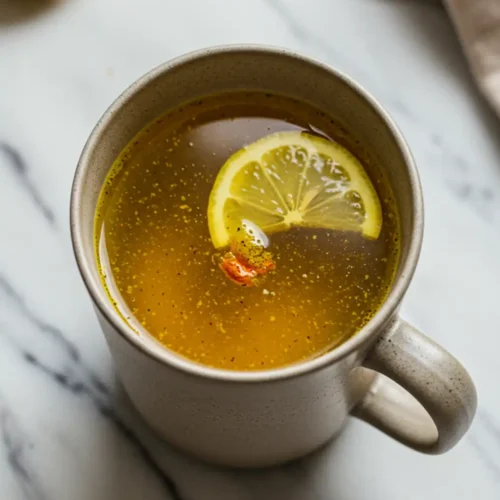Okay, real talk, amici. Have you ever stood in the supermarket meat aisle, staring blankly at packages labeled “gammon” and “ham,” feeling totally lost? Mamma mia, I have! My husband, bless his goofy heart, once tried to make a pun about it being a ‘ham-biguous’ situation, and even my chatty 6-year-old daughter just looked confused. It feels like they’re deliberately trying to trip us up, right? You see these words, think ‘pork,’ and assume they’re interchangeable. Nope! It’s a super common mix-up that leaves lots of us scratching our heads.
But fear not, my fellow home cooks! Today, we’re putting on our detective hats and solving the mystery of what is the difference between gammon and roast ham. Stick with me, and by the end, you’ll be a bona fide pork pro, ready to confidently grab the right one for your recipe. Forget the confusion; it’s actually way simpler than you think! Understanding this little distinction is a game-changer. So grab a coffee (or maybe something a little stronger, I won’t judge!), and let’s settle this debate once and for all!
Gammon Unveiled: What Exactly is It?
Alright, let’s start with gammon. What in the world is it?
Think of gammon as ham’s cool, uncooked cousin. It’s a leg of pork that has been cured (preserved using salt, sometimes with sugar or spices) but crucially, it’s sold raw . Nonna always said, “You gotta know your ingredients before you cook ’em!” That curing process gives gammon its signature savory flavor, but because it hasn’t been cooked yet, you absolutely must cook it before serving. No exceptions! The good news? It’s super versatile – you can boil it, roast it, bake it, slice it into steaks… so many possibilities! But remember, Job #1 is cooking it. This raw state is the first major clue in figuring out what is the difference between gammon and roast ham.
You might also see smoked or unsmoked gammon – smoking just adds another layer of delicious flavor. But raw is the keyword here!
Roast Ham: The Ready-to-Eat Treat
Okay, now let’s switch gears and talk about roast ham. What’s its deal?
Here’s the simple truth: Roast ham (or often just “ham” in the US) is essentially gammon that has already been cooked . Ta-da! Mystery solved! It’s usually cured just like gammon, but then it’s fully cooked (roasted, baked, sometimes boiled) before being sold. This means it’s ready to eat straight from the package – perfect for sandwiches, salads, dicing into pasta dishes, or adding to a breakfast scramble. You can warm it up if you like (think glazed holiday ham), but you don’t have to cook it for safety.
This ready-to-eat status is the absolute key when you’re asking what is the difference between gammon and roast ham. Gammon = raw, needs cooking. Ham = cooked, ready to go. See? Not so scary after all! The pre-cooking also influences the final taste and texture, making it different from a gammon you cook yourself.
Gammon vs. Roast Ham: The Key Distinctions
Alright, let’s put on our comparison glasses and really nail down the main differences. You asked what is the difference between gammon and roast ham, so let’s break it down point by point. Even though they start as cousins from the same piggy family, they end up as very different dinner guests!
Cooking Status: The Core Difference
This is the big one, the main event, the absolute key takeaway: Gammon is sold RAW. Ham is sold COOKED. Say it with me! Gammon needs heat to become safe and delicious. Ham is ready to slice and eat (or heat). This fundamental difference dictates how you buy it, store it, and prepare it. You wouldn’t slice up raw gammon for sandwiches (Mamma mia, no!), and while you can cook a ham further (like glazing), it doesn’t require cooking like gammon does. This raw vs. cooked status is the #1 answer to what is the difference between gammon and roast ham.
Preparation Methods: Different Paths
Because gammon is raw, you’ve got options! You’re the chef calling the shots. Will you roast it to glorious perfection? Boil it for super tender results (check out our thoughts on if you should boil gammon before roasting)? Slice it into thick steaks for pan-frying? It’s a blank canvas! Ham, being already cooked, needs much less fuss. It’s often about adding flavor (like a glaze) or simply incorporating it into other dishes – think dicing for omelets or shredding for soups. The preparation paths are totally different, directly linked to that core cooking status.
Texture and Taste: Subtle Nuances
Okay, let’s talk taste buds. How you cook your gammon dramatically affects its final texture and flavor. A slow roast can yield juicy tenderness with a crisp edge (especially if you follow tips on how to keep gammon moist when roasting), while boiling might result in softer, shreddable meat. Pre-cooked ham usually has a consistent, often smoother and moister texture throughout, thanks to its cooking method (often steaming or baking in commercial settings). The flavor of ham is set, while with gammon, you control the final seasoning and glaze. These subtle but real differences in mouthfeel and flavor profile are another layer to understanding what is the difference between gammon and roast ham.
A Matter of Terminology: Where You Hear Which Word
So, if it’s this simple (raw vs. cooked), why all the confusion? Ah, language, you tricky thing! Sometimes the confusion comes down to location, location, location. How people talk about these meats varies depending on where you are in the world, which definitely muddies the waters when you’re trying to grasp what is the difference between gammon and roast ham.
Here in the US (and often in Canada), the word “ham” gets used pretty broadly for both the cooked, ready-to-eat stuff AND sometimes the uncooked, cured leg that needs cooking (often labeled “uncooked ham” or “fresh ham” – though fresh ham usually isn’t cured). Across the pond in the UK and Ireland, they tend to be more specific: “gammon” clearly means the uncooked, cured leg, and “ham” means the cooked version. So, if you’re reading a British recipe calling for gammon, know that it means the raw stuff! This difference in everyday language is a huge reason why people get tangled up. Context is everything!
Using Gammon & Ham: A Culinary Journey
Alright, armed with the knowledge of what is the difference between gammon and roast ham, let’s get cooking! Both are fantastic ingredients, but you use them differently. Time for some kitchen inspiration!
Gammon, being raw, is your go-to for a proper roast dinner centerpiece. Think a beautiful glazed joint, thick-cut gammon steaks sizzled in a pan with pineapple or eggs (a classic!), or boiled and shredded for pea and ham soup. You control the cooking method and the final flavor profile. Ham, your ready-to-eat friend, is perfect for quick meals and additions: slicing for sandwiches and wraps, dicing into quiches, frittatas, or pasta salads, cubing for split pea soup, or layering onto pizzas. See the difference? One requires cooking effort; the other is convenience! Knowing this helps you pick the right pork for the job. Need a fantastic glaze idea for either cooking a gammon or reheating a ham? This Glazed Baked Ham recipe from SimplyRecipes has great flavor combos.
Frequently Asked Questions (FAQ)
Okay, let’s rapid-fire answer some of those lingering questions you might still have. Quick answers, mama-style!
Q: Is roast ham the same as gammon?
A: Nope! Not the same. The simple answer to what is the difference between gammon and roast ham is: Gammon is RAW cured pork leg that needs cooking. Roast ham is COOKED cured pork leg that’s ready to eat. Big difference!
Q: Why do the English call ham gammon?
A: They don’t quite call all ham gammon! In the UK, they use ‘gammon’ specifically for the uncooked cured leg, and ‘ham’ for the cooked version. It’s just their way of being super clear about whether it needs cooking or not! Makes sense when you think about it.
Q: Is gammon better roasted or boiled?
A: Ah, depends what you like! Roasting gives you that gorgeous crispy outside (especially with a glaze!), while boiling can make it incredibly tender and easy to shred. Both are delicious! Try both ways and see which team you’re on!
Q: Is gammon another word for ham?
A: Not exactly. Think of it like this: all gammon, once cooked, becomes ham. But not all ham started out being sold as gammon (some ham is cooked differently). The key is gammon = raw, needs cooking; ham = cooked, ready to go. So, not interchangeable when buying! Want to cook gammon perfectly? Our gammon roast dinner recipe is a great place to start.
So there you have it, amici! Mystery solved! We’ve untangled the web and figured out what is the difference between gammon and roast ham! Easy peasy, right? Just remember: Gammon = Raw. Ham = Cooked. Keep that straight, and you’ll navigate the meat counter like a pro. Both are delicious in their own right, so don’t be afraid to cook with both! Now go forth and conquer that kitchen! And hey, if you’re roasting that gammon, don’t forget some amazing roast gammon sides! Let me know in the comments if this cleared things up for you! Buon appetito!











